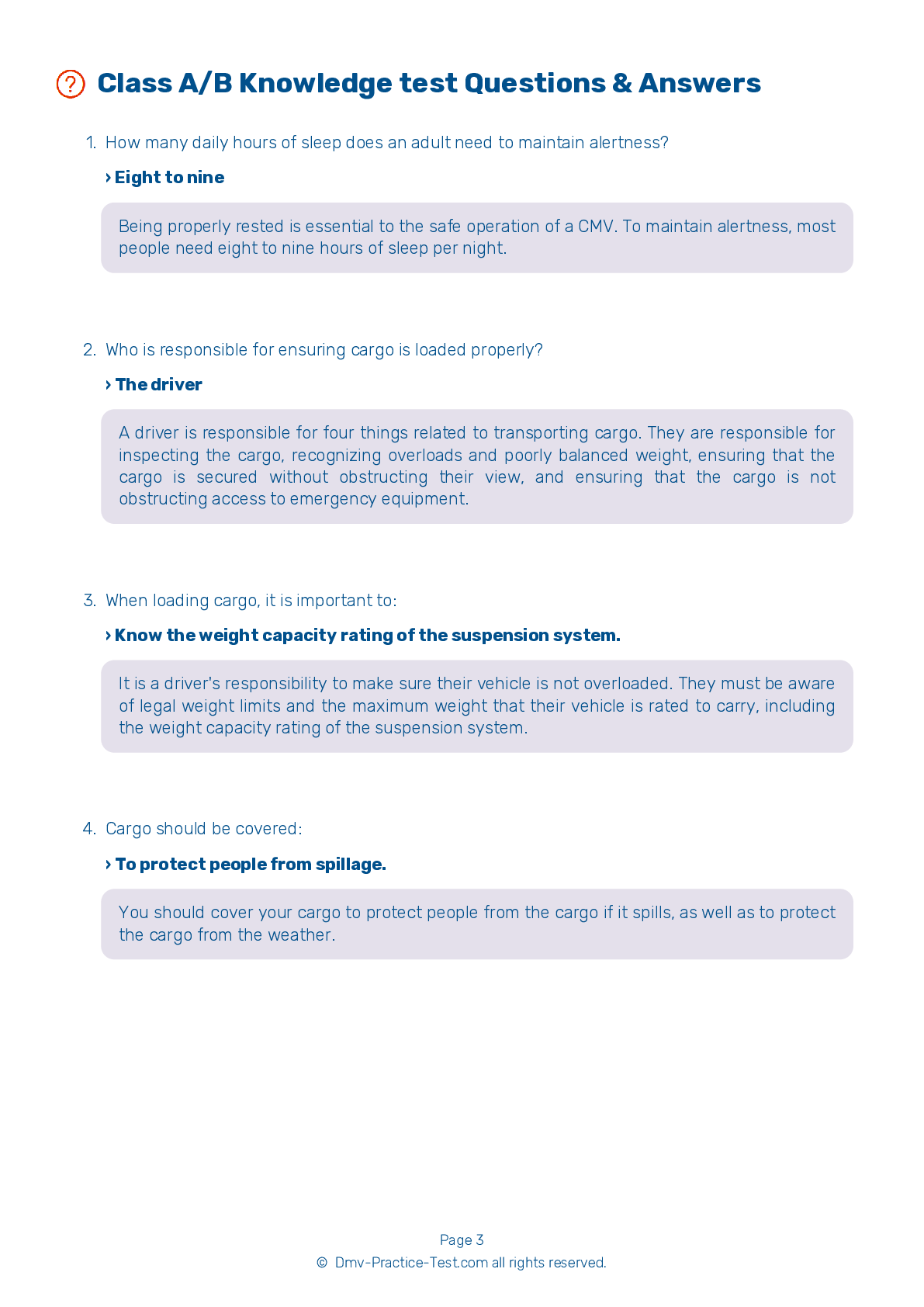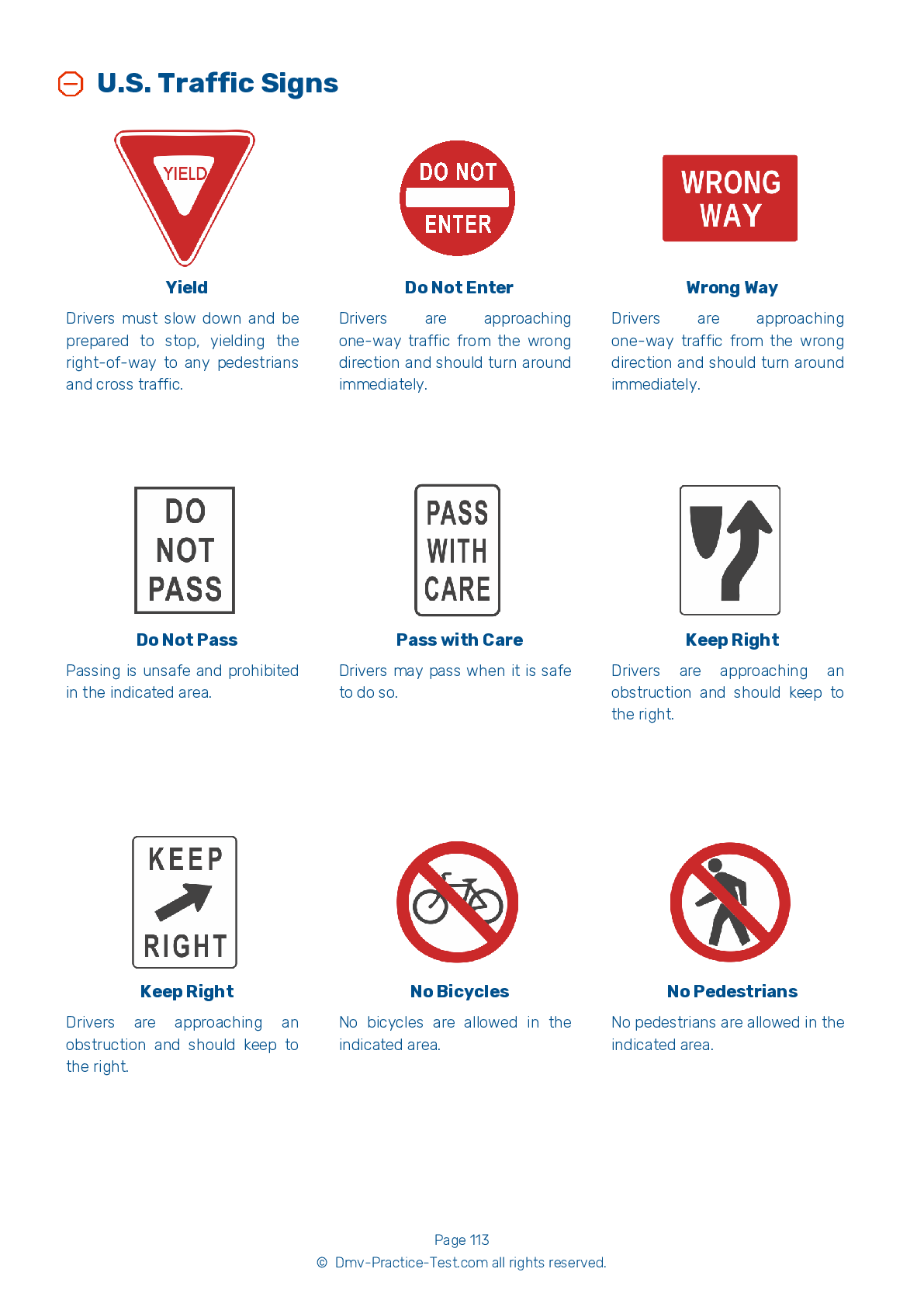Combination Vehicles Practice Test | Vermont 2025 #2 Page 2 of 3
Train for FREE online with our Vermont CDL combination vehicle test. The official exam test consists of several obligatory parts, with all of them checking your knowledge of different blocks of road rules. If you need to obtain a VT combination license in 2025, practice as much as possible. Free sample tests published on our website will help you check and improve your knowledge and boost your grades. Please bear in mind that DMV requirements for issuing a combination license may vary from state to state.
8 . When driving a vehicle equipped with an Anti-Lock Braking System (ABS), brakes should be applied:
When driving a vehicle with ABS, you should brake in the same manner as you would in a vehicle without ABS.
9 . When braking while pulling a trailer equipped with anti-lock brakes, you should:
When driving a tractor-trailer combination that is equipped with an Anti-Lock Braking System (ABS), you should brake in the same manner that you would if the vehicle was not equipped with ABS.
10 . If you are backing and become unsure about your path of travel, you should:
If you are unsure of your path while you are driving in reverse, you should stop, exit the vehicle, and recheck your path of travel.
11 . When the wheels of a trailer lock up:
A trailer may swing out and strike other vehicles if its wheels lock up. This is especially likely with lightly-loaded trailers.
12 . Rearward amplification refers to:
The "crack-the-whip" effect is a result of rearward amplification. If not properly handled, a trailer can tip over due to rearward amplification.
13 . When coupling a trailer:
When coupling, make sure you couple matching glad hands. They are often color-coded to help drivers avoid mistakes. Typically, blue is used for service lines and red is used for emergency lines.
14 . When glad hands are coupled, the seals should be pressed together at a ____ angle.
When coupling, be sure to couple the proper glad hands. When glad hands are connected, the seals should be pressed together at a 90-degree angle.
See the exact questions that will be on the 2025 Vermont DMV exam.
99.2% of people who use the cheat sheet pass the FIRST TIME
Lillian MCcranie explains how our CDL study guide was helpful in passing the exam and recommends it to everyone.
Cameron tells us how he purchased the CDL exam, and found it to be a useful tool which helped him pass the exam and find a job.



